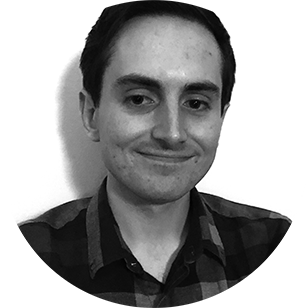The Last of Us: The biggest changes from the game
The tweaks that took the franchise from PlayStation to HBO
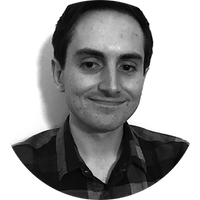

HBO's The Last of Us is a largely faithful adaptation of the hit video game. But that's not to say there haven't been major changes made to the source material along the way. Here are the most significant ways the series has deviated from and built upon the game — and why:
The show's opening scene wasn't in the game
Right from the top, the HBO show's first scene isn't from the source material. The series begins in 1968 with an epidemiologist on a talk show making the chilling case that a fungus infection spreading across the world would be far more dangerous than a viral pandemic.
None of this was in the game, which doesn't begin in the 1960s. Instead, it jumps straight into the action with Joel and his daughter, Sarah (who is white in the game, whereas she's played by a biracial actress in the show), fleeing their home during the outbreak only a few minutes in. This also means most of the show's opening scenes, where we see more of Joel and Sarah's home life and meet their neighbors before the outbreak, was added.
The Week
Escape your echo chamber. Get the facts behind the news, plus analysis from multiple perspectives.

Sign up for The Week's Free Newsletters
From our morning news briefing to a weekly Good News Newsletter, get the best of The Week delivered directly to your inbox.
From our morning news briefing to a weekly Good News Newsletter, get the best of The Week delivered directly to your inbox.
One reason for including the talk show opening, co-creator Craig Mazin explained on the official Last of Us podcast, was that the series was being released amid a real viral pandemic. So this allowed the show "to address the elephant in the global room" and make clear that this apocalypse isn't like the COVID-19 outbreak, Mazin said.
"I thought it was important to say to people, 'We are not a show that's asking you to share some of your own personal horror about the viral pandemic with us,'" he noted.
Other reasons for the addition included wanting to expand the timeline of the story and increase the tension of the following prologue scenes.
The car crash happens differently in the game
Once Sarah, Joel, and Tommy flee, the show's escape sequence is almost an exact recreation of the scene in the game, right down to being similarly viewed from Sarah's perspective in the backseat of the car. But one notable change comes when a plane comes down, causing the car to crash. In the game, the car simply crashes because another vehicle hits it, and there's no plane crash. Oh, the joys of having an HBO budget.
A free daily email with the biggest news stories of the day – and the best features from TheWeek.com
The game takes place in 2033, not 2023
The HBO series shifts the timeline of the story back a full decade. When the game jumps forward after an initial 2013 outbreak prologue, it takes us to the year 2033 — 20 years in the future from when the game was released — whereas the show brings the prologue back to 2003 before jumping to 2023.
Mazin told Insider this change was made so the show could take place the same year that it airs.
"I just had this thing where if I'm watching a show and it takes place 20 years in the future from my time now, it just seems less real," he said. "...There's just something about saying this is happening now in this parallel universe."
The show fleshes out Marlene's relationship with Ellie
In the game, players barely see Marlene and Ellie interact before Joel and Tess take her on the smuggling mission, largely because the story is being told from Joel's perspective. The show, though, has more time to flesh out their relationship before the mission begins. We get a scene between just Ellie and Marlene that wasn't in the game, where we learn Marlene put Ellie in a FEDRA military school when she was a baby to keep her safe.
"The relationship between Ellie and Marlene in the game was sort of like, 'Look, just take this kid. I need you to take this kid, it's important,'" Mazin noted on the Last of Us podcast. "Here, you get the sense that Marlene has this profound connection to Ellie, which will be something that we're going to pay off and pull on quite a bit later on."
Joel's romance with Tess is confirmed in the show
The game implied that Joel and Tess were an item, but this was never actually confirmed. The show, though, removes any doubt, showing the two in bed together.
Joel goes on the mission with Ellie for a different reason in the game
In the show, Joel agrees to leave the quarantine zone and escort Ellie largely out of concern for his brother, Tommy. He's promised a car battery that Robert sold to the Fireflies, which he needs to go find Tommy, in exchange for escorting Ellie.
In the game, Joel is instead promised weapons, which Robert similarly sold to the Fireflies, in exchange for escorting Ellie. But finding his brother isn't why he accepts the assignment. In fact, Joel and Tommy haven't been keeping in touch at this point in the game, unlike in the show.
The show changed the way the infection is spread
In the game, a person can become infected either through a bite or through breathing in airborne spores, so there are many sequences where Joel has to wear a gas mask. But in the show, the spore concept was replaced with tendrils, as we see in the scene with Tess' nasty zombie kiss in the second episode.
The reason for removing the spores, co-creator Neil Druckmann told Polygon, was to avoid having the show's characters constantly covering their faces in masks. "Then we lose so much, which is maybe the most important part of the journey is what's going on inside behind their eyes, in their soul, in their beings," he said.
Still, Mazin told Variety, "I don't necessarily know if we're going to see any spores this time around, but to say that our world is devoid of them would not be accurate. We don't quite know yet."
The show seems to have tweaked the infection's origin
Similarly, the game suggests the outbreak can be traced to infected crops in South America, whereas the show has changed this so the outbreak's origins appear to have been a flour and grain factory in Jakarta, Indonesia.
We learn this in a cold open at the start of the episode "Infected," in which a mycologist in Jakarta is asked for advice on the outbreak, only to recommend that the city be bombed. Nothing like this happened in the game.
"We wanted to give a little bit more of an origin story" of the infection and show it was "global," not "something that was just happening in America," Mazin explained on the official Last of Us podcast. Druckmann noted this was a "huge deviation" from how the game was made, though. "We made a conscious choice [in the game] that we will never leave the perspective of the United States," Druckmann, who wrote the original game, said.
Ellie being bitten again was added
This led to another change in the second episode, in which Ellie is bitten but doesn't become infected. This second bite doesn't happen in the original game, but the change ties back to the removal of spores.
In the game, there are many moments where Joel has to wear a mask to avoid breathing in spores. But Ellie can breathe them in without a mask and not become infected, proving she really is immune. The show couldn't give Joel this same kind of evidence without spores, so the next best thing was having her receive a second bite.
Tess' death was tweaked
Tess' death at the end of the episode "Infected" is similar to the game in spirit, but with one important difference. In the game, Tess, Joel, and Ellie are being pursued by FEDRA at this point, so Tess is shot at the State House while holding the soldiers off. In the show, though, FEDRA is nowhere to be found during this sequence. Instead, it's the infected that are the threat, and Tess is killed in an explosion, rather than being shot.

On the official Last of Us podcast, Mazin explained this change was made because he questioned why FEDRA would care to follow Tess, Joel, and Ellie out of the quarantine zone at all. "It didn't make much sense to me to have FEDRA all the way out there," he said.
The other reason for the change was to show a "different result of being infected, which was not one of mere violence or horror, but rather a sick kind of community," Mazin said. This idea of the infected being connected through a hivemind also wasn't in the game — though Druckmann admitted on the podcast he wishes it was.
Bill and Frank's storyline is radically different
But by far the biggest departure from the game came in the third episode, "Long, Long Time," in which nearly the entire story of Bill (Nick Offerman) and Frank (Murray Bartlett) was changed for the series.
First of all, Bill is still alive in the game when Joel and Ellie find him, whereas in the show, he has died by suicide by then. Bill is initially antagonistic toward Joel and Ellie in the game before reluctantly agreeing to help them gather gear to fix up a car. So the three travel across town together, encountering infected along the way. Eventually, they come across Frank's body, and we see he has hanged himself. Unlike in the show, we find out that Frank committed suicide after being bitten to avoid becoming infected.
The game does imply that Frank and Bill were lovers like in the show. But their relationship is only alluded to — there are no flashbacks of them together — and it's clear that things ended badly between them. Bill tells Joel that he once "had somebody that I cared about," a "partner" whom he had to "look after," but "in this world, that sort of s--t's good for one thing: getting you killed." After finding Frank's body, we learn that he stole Bill's car battery and planned to run off before he was bitten. Joel then comes across a note that Frank left Bill, where he writes, "I want you to know I hated your guts."
"I grew tired of this s--tty town and your set-in-your-ways attitude," the note from Frank to Bill says. "I wanted more from life than this and you could never get that. And that stupid battery you kept moaning about — I got it. But I guess you were right. Trying to leave this town will kill me. Still better than spending another day with you."
The show changed all of this so that Frank and Bill are genuinely a loving couple until the end, and they die together after Frank develops a degenerative disease. In the game, Joel and Ellie leave with a car from Frank's house like in the show, but Bill doesn't actually die at all. The last time players see Bill, he doesn't impart a meaningful lesson on Joel like he does in his series with his note. Instead, he simply tells Joel to "get the f--k out of my town."

One reason for these massive changes, Druckman explained on the Last of Us podcast, was to contrast a hopeful love story with the tragedy of Tess' death at the end of the previous episode. Tess' death showed "what you stand to lose when you love someone: you can feel this immense loss," Druckman said. The Bill and Frank love story shows, though, "here's what you gain."
From Pittsburgh to Kansas City
In the fourth episode, "Please Hold to My Hand," Joel and Ellie are ambushed in Kansas City, where we see that a group of revolutionaries has overthrown FEDRA.
The ambush also happens in the game, but all of this occurred in Pittsburgh, not Kansas City. It sounds like this change was primarily based on needing to switch to a city that looked similar to where The Last of Us was filmed.
"The Pittsburgh-ness of Pittsburgh wasn't necessarily important [in the game]," Mazin said on the official Last of Us podcast. "We had certain environments we knew we could shoot in because we were shooting in Alberta — largely around Calgary, a little bit in Edmonton — and it looked closer to Kansas City. It just literally came down to that."
But Druckman added that they also wanted to move this section of the story closer on the map to where Joel and Ellie are heading next.
Ellie saving Joel happens differently in the show
In the fourth episode, Ellie rescues Joel by shooting a bandit while he's being attacked. Joel finishes the job, but not before the show brutally gives this bandit some characterization and even a name, Bryan.
There's a similar moment in the game where Ellie shoots a man to save Joel, but it happens later on in a hotel once they're deeper into the city. In the game, Ellie also straight up kills him, so Joel isn't the one to finish the job, and it's just a random guy who doesn't plead for his life and give his name like in the show.
More significantly, Joel is angrier about this in the game, asking Ellie why she didn't "hang back like I told you to" and proclaiming he's "glad I didn't get my head blown off by a goddamn kid." The show softens this reaction, with Joel feeling guilty and apologizing to Ellie for putting her in a position to save him.
Melanie Lynskey's Kathleen is a show invention
We meet Kathleen, played by Melanie Lynskey, in the fourth episode, the leader of the group that has taken over Kansas City. This character is an invention for the show, as is the idea of Henry being wanted for apparently ratting Kathleen's brother out to FEDRA. Perry, Kathleen's second-in-command, is also a new character for the show (though he's played by Jeffrey Pierce, the actor who played Joel's brother in the game).
In general, the show has dramatically expanded on this section of the game by fleshing out these antagonists significantly. While the player does come across these enemies who have taken Pittsburgh, the game never really gives us a good look at them and their motivations.
"In the game, they were just an obstacle," Druckman explained on the "Inside the Episode" featurette. In the show, though, he noted the aim was to make them "feel like people with a real goal and real motivation and humanity."
Henry and Sam have a new backstory in the show
Henry and Sam were characters in the game, and the broad strokes of their story are similar. But the show tweaked it so that Henry and Sam are in hiding after Henry gave up information about Kathleen's brother to FEDRA. In the game, Henry and Sam were just looking for supplies in the city before being ambushed like Joel and Ellie, but they have no connection to the revolutionaries.
Sam wasn't deaf in the game
Another significant change is that unlike in the show, the Sam of the game wasn't deaf.
On the Last of Us podcast, Mazin said this change stemmed, in part, from a desire for the Henry and Sam dynamic to not be too similar to Joel and Ellie's. "It automatically brings a certain kind of intimacy to those scenes because they're quiet, which I love," Mazin said, noting that this would also put them "in this bubble that had to expand to include Joel and Ellie." On the "Inside the Episode" featurette, Druckmann admitted his reaction to this idea was, "That's so good, it makes me upset that I didn't think about it [for the game]."
Sam is also a bit younger in the show. He's meant to be 13 in the game, just a year younger than Ellie, whereas he's eight in the show. "We liked the idea that Ellie would have somebody that could look up to her the way that she looked up to Joel," Mazin said on the Last of Us podcast.
The sniper being an old man was new for the show
The sequence where Joel has to take down a sniper to protect Henry, Sam, and Ellie was fairly faithful to the game — at least up until the point where the sniper is revealed to be an old man with poor aim.
On the Last of Us podcast, Mazin explained this idea came from the realization that "we weren't going to get the same value from presenting the action the way that" the game did. This led to the idea of there being a "sadness" to this sequence in that the sniper is "really bad" because he's old and can't see well, Mazin recalled, a change from the game, in which the sniper is actually "really good."
Sam didn't reveal to Ellie that he's infected in the game
The basics of Henry and Sam's fate — that Sam becomes infected and Henry kills him before shooting himself — are the same in the show as in the game, but with one big difference.

In the show, Sam reveals to Ellie that he's infected the night before he turns. That doesn't happen in the game, in which Sam never tells anyone that he was bitten (though he hints at it during a final conversation with Ellie, where he says he's scared of becoming infected). This also allows for the moment where Ellie reveals that she's immune and attempts to heal Sam with her blood.
"We thought that because of the nature of the relationship between our Sam and our Ellie, which is that he looked up to her, that it made sense that he would trust her," Mazin said on the Last of Us podcast, adding that by having Ellie seek to cure him, "we really wanted to show Ellie starting to believe that she could do something special."
The original game never went inside the Jackson commune
The sixth episode sees Joel find his brother, Tommy, at a commune in Jackson, Wyoming. Joel similarly reunites with his brother at this point in the game, but it happened at a dam, where Tommy and his wife, Maria, were trying to restore electricity.
In fact, the original game never took players inside the Jackson commune at all, though on the Last of Us podcast, Druckmann explained this was only due to "time and budget" limitations.
"We actually had all this concept art for going inside, and we just didn't have the resources to pull it off," Druckmann said. "So when we started talking about this sequence, we were like, 'Oh, we could just see the dam, but it would actually be way more interesting to go into Jackson itself and see what's at stake.'"
Players later, however, saw the Jackson commune in The Last of Us Part II.
Maria isn't pregnant in the game
Tommy is reluctant to take Ellie the rest of the way in the show largely because his wife, Maria, is pregnant. In the game, Tommy also doesn't initially want to take Ellie because he tells Joel "my cause is my family now," but Maria wasn't expecting a child in the game.
Speaking to Variety, the episode's director, Jasmila Žbanić, said this was a "really important touch" because it "makes Tommy's decision much, much heavier that he accepted to take Ellie."
Ellie's conversation with Maria happened off-screen in the game
The sequence where Ellie talks with Maria and learns about Joel's daughter was an addition to the show, and it wouldn't have really been possible in the game, where the player is almost always with Joel. Ellie mentions in the game that Maria told her about Sarah, but that conversation wasn't depicted until the show. "You just see the aftermath of that conversation [in the game]," Druckmann noted on the Last of Us podcast, "...and here, we got to brainstorm and flesh that out."
Joel's emotional monologue didn't happen in the game
In an emotional conversation with Tommy in the sixth episode, Joel admits how afraid he is of failing Ellie and getting her killed. He doesn't have a monologue like this in the game, as Joel is more guarded throughout this section, though he does tell Ellie he trusts Tommy "better than I trust myself."
"This is not at all like something we saw from Joel in the game," Mazin noted on the Last of Us podcast. "This is different. This is sadder, I think. It's a little more broken down."
Joel also doesn't have panic attacks in the game as he does in the show.
Ellie briefly ran away at this point in the game
Joel's fight with Ellie near the end of the sixth episode is almost an exact, word-for-word recreation of a famous scene in the game. The only significant tweak is that in the game, Joel tells Ellie that "you are treading on some mighty thin ice here" when she brings up his late daughter. On the Last of Us podcast, Druckmann explained this line was adjusted simply because Joel doesn't quite talk this way in the show.
But there's one other change to the context of this scene. In the game, Ellie takes one of the horses and runs away after learning Joel is planning to leave her with Tommy, so their argument happens after Joel has caught up with her.
Joel's injury was far more severe in the game
Joel is seriously injured after being stabbed at the end of the sixth episode, but this has been significantly toned down from the source material. In the game, Joel falls from a balcony and is impaled in the stomach after landing on a rebar.
This was tweaked for the show largely to make the injury more realistic. "[The injury in the game] does make sense tonally in a world where you are curing yourself of gunshot wounds, for instance," Mazin said on the Last of Us podcast. "But we're dealing with a more grounded approach to the way violence impacts the human body."
The Ellie flashback wasn't part of the original game
Ellie's flashback episode, "Left Behind," wasn't in the first Last of Us game, though it's also not new material. This story is from a standalone piece of downloadable content called The Last of Us: Left Behind released in 2014, the year after the original game debuted. So players didn't find out Ellie's backstory until the entire first game was over, whereas the show folded this back into the main story.
The show gives us more backstory at the military school
The episode "Left Behind" opens with a few scenes showing Ellie's life at the FEDRA military school, including one where she punches a girl, Bethany. These scenes weren't in the game, as the Left Behind DLC's flashback picks up the night Riley returns.
The game has Ellie search for supplies at a mall in the present
The game's version of "Left Behind" cuts back and forth between Ellie's flashback and Ellie in the present trying to find medical supplies for Joel, while the show focuses almost entirely on the flashback. In the game, the present-day storyline also saw Ellie look for supplies in a mall, echoing her flashback, where she fights to survive against both infected and humans. The show moves all the present-day material to a garage and house, never having Ellie go to a mall.
Ellie and Riley didn't encounter a dead body in the game
Before they arrive at the mall in the show, Ellie and Riley encounter the dead body of a man who appears to have overdosed and falls through the floor. Ellie and Riley do walk through a building in the game before arriving at the mall, but this moment with the dead body doesn't happen.
The arcade game didn't work in the game
Riley takes Ellie through the "four wonders" of the mall in the show, which are largely faithful to the game. But one difference comes when they arrive at an arcade. In the game, the arcade machine they try to use doesn't actually work, so Riley has Ellie close her eyes so she can imagine playing it. It was also a fictional arcade game called The Turning, but the show changes it to a real game, Mortal Kombat II, and allows Ellie to play it.

Ellie and Riley didn't dance in Halloween masks in the game
In the game, one of the first places Ellie and Riley go in the mall is a Halloween store, where they wear masks. The show changes the timeline of this so the Halloween store is where their kiss scene takes place later on, and they have the masks on while they're dancing. The game had the dancing and the kiss take place in an electronics store, though the show's adaptation of it is otherwise quite faithful, and the Halloween masks are even identical.
Ellie and Riley were attacked by a swarm of infected in the game, not just one
Ellie and Riley getting bitten happens slightly differently in the show. The episode reveals the presence of an infected person about 15 minutes before the attack, infusing a sense of dread into Ellie and Riley's dance scene, while the game didn't reveal that the infected had been woken up before they suddenly attack. And in the game, a whole horde of infected come after Ellie and Riley, leading to an action sequence where they run for their lives. In the show, it's just a single infected person.
On the Last of Us podcast, Mazin said one reason this change was made was to show that "that's all it takes, is just one."
Ellie killed a rabbit in the game, but not in the show
One small change comes near the start of the episode "When We Are in Need." In the game, this section memorably opens with Ellie killing a rabbit. In the show, Ellie tries hunting a rabbit, but she trips and falls and it gets away — which should delight the streamer who reacted in horror to the rabbit being killed in a 2019 video that spawned a popular meme.
Ellie was also using a bow and arrow, not a rifle, during this part of the game.
Ellie and David faced off against infected together in the game
In the game's version of "When We Are in Need," David gains Ellie's trust partially by fighting alongside her against a swarm of infected. In the show, though, they never encounter any infected.
"In the gameplay, you save each other's lives, and that's how you build trust," Druckmann explained on the official Last of Us podcast. "Here, we have to build trust through a conversation."
The game's action was removed because "the plot implications of a lot of infected running around out there that could just get you any moment" would "permeate throughout the episode" in a way the showrunners wanted to avoid, Mazin added.
The show expands on David's backstory
We learn more about David in the show than we do in the games, with the most crucial additional detail being that he was apparently a math teacher pre-apocalypse, whose students were Ellie's age. That detail wasn't in the game, though it only makes the implication that he's a pedophile more chilling. We also get to see more of how David's cannibalistic cult functions, which we didn't quite get in the game because players are always following either Ellie's or Joel's perspective.
The basement sequence wasn't in the game
The tense sequence where one of David's men comes down into the basement while Joel is still recovering wasn't in the game, in which Joel wakes up and simply leaves the house to go search for Ellie. This scene does, however, tip its hat to the game by having Joel kill the man just like players do when performing a stealth kill. The subsequent scene where Joel violently interrogates another one of David's men is also directly lifted from the game.
Joel pulled Ellie away from David in the game
After Ellie brutally kills David in the show, she goes outside and encounters Joel, who embraces her and calls her "baby girl." This happens a bit differently in the game, where Joel comes in while Ellie is still in the restaurant, which is burning down. He also pulls her off of David while she's hacking away at him, whereas Joel doesn't stop her in the show.
According to the official Last of Us podcast, this was partially a practical change. "We didn't want it to happen with the fire around … there's the danger of the fire that just felt a little different in live action than it did in the game," Druckmann said, while Mazin noted there "was a question of how does Joel get inside if the keys are on David."
But Mazin added the change was also partially due to "wanting our Ellie to have completed" killing David "to the point where she can literally walk away on her own."
Ellie's immunity origin story is new
The season finale, "Look for the Light," begins with a flashback of Ellie's mother, Anna, becoming infected just as she's giving birth, implying this is why Ellie is immune. None of this was in the game, which never provided an explanation of Ellie's immunity, nor did it show players Ellie's mother at all.
The idea, though, came directly from Druckmann, who had at one point planned to tell this backstory in an animated or live-action short that was never made. On the official Last of Us podcast, Mazin recalled being blown away when Druckmann shared this idea with him. "Here's an answer [to why Ellis is immune]," Mazin said. "And what I loved so much about it was that the answer was soaking in sadness."
Anna is played in the show by Ashley Johnson, who portrayed Ellie in the games.
Joel's suicide attempt backstory wasn't in the game
A big new detail in the show comes when Joel reveals he attempted suicide after the death of his daughter, a backstory that wasn't made explicit in the source material. The game does, however, arguably hint at it via a brief line where Joel mentions that suicide isn't "easy."
But this moment in the show was somewhat of a replacement for a similar emotional beat in the game when Ellie gives Joel a picture of his daughter that she took from Tommy's wife, and he gets choked up. On the official Last of Us podcast, Druckmann said the moment with the picture didn't feel "as grounded as how the show is turning out to be," leading to the decision to replace it with a similar "opening up for each other" beat.
A set piece in a flooded tunnel was removed
Before they arrive to the Fireflies, there's a major action sequence in the game where Joel and Ellie fight off infected while progressing through portions of the city that are partially underwater. At one point, they end up in a flooded tunnel, and there's a set piece where Ellie nearly drowns. So the Fireflies confront them, and take Ellie, while Joel is struggling to get her to breathe again. This was all removed for the show.

Joel's final lines of the season are tweaked slightly
From there, the rest of the finale is quite faithful to the game right up to its famous ending scene, which is recreated virtually shot for shot and line for line, though some of the dialogue is slightly tweaked.
As noted on the Last of Us podcast, in the game, Joel tells Ellie, "I struggled for a long time with surviving, and no matter what, you keep finding something to fight for." In the show, Joel is a bit more verbose. "Sometimes things don't work out the way we hoped," he tells her. "You can feel like you've come to an end, and you don't know what to do next. But if you just keep going, you find something new to fight for."
On the Last of Us podcast, Mazin said he wanted to make clear that Joel is "engaging in rhetorical bluster" because he feels caught in his lie. "He's entering this kind of platitude cloud," Mazin noted.
But otherwise, Mazin and Druckmann changed little about the ending, one of the most fervently debated in video game history. "For all the fun we have changing things, there are times where you just don't," Mazin said on the podcast. "Because if you change the end of The Last of Us, you're a f--king idiot."
Brendan worked as a culture writer at The Week from 2018 to 2023, covering the entertainment industry, including film reviews, television recaps, awards season, the box office, major movie franchises and Hollywood gossip. He has written about film and television for outlets including Bloody Disgusting, Showbiz Cheat Sheet, Heavy and The Celebrity Cafe.
-
 Political cartoons for January 4
Political cartoons for January 4Cartoons Sunday's political cartoons include a resolution to learn a new language, and new names in Hades and on battleships
-
 The ultimate films of 2025 by genre
The ultimate films of 2025 by genreThe Week Recommends From comedies to thrillers, documentaries to animations, 2025 featured some unforgettable film moments
-
 Political cartoons for January 3
Political cartoons for January 3Cartoons Saturday's political cartoons include citizen journalists, self-reflective AI, and Donald Trump's transparency
-
 The best drama TV series of 2025
The best drama TV series of 2025the week recommends From the horrors of death to the hive-mind apocalypse, TV is far from out of great ideas
-
 The 8 best comedy series of 2025
The 8 best comedy series of 2025the week recommends From quarterlife crises to Hollywood satires, these were the funniest shows of 2025
-
 A postapocalyptic trip to Sin City, a peek inside Taylor Swift’s ‘Eras’ tour, and an explicit hockey romance in December TV
A postapocalyptic trip to Sin City, a peek inside Taylor Swift’s ‘Eras’ tour, and an explicit hockey romance in December TVthe week recommends This month’s new television releases include ‘Fallout,’ ‘Taylor Swift: The End Of An Era’ and ‘Heated Rivalry’
-
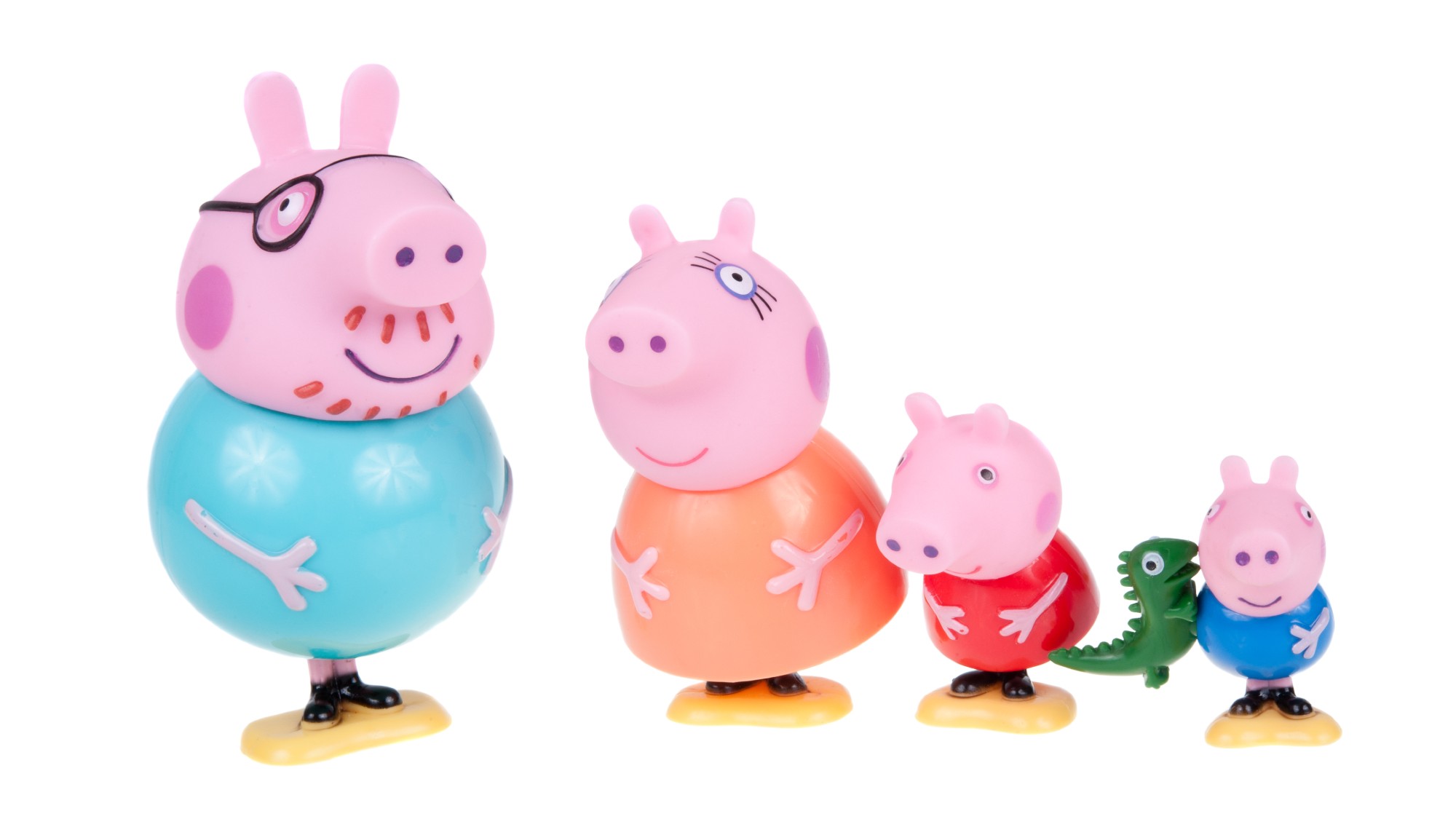 Daddy Pig: an unlikely flashpoint in the gender wars
Daddy Pig: an unlikely flashpoint in the gender warsTalking Point David Gandy calls out Peppa Pig’s dad as an example of how TV portrays men as ‘useless’ fools
-
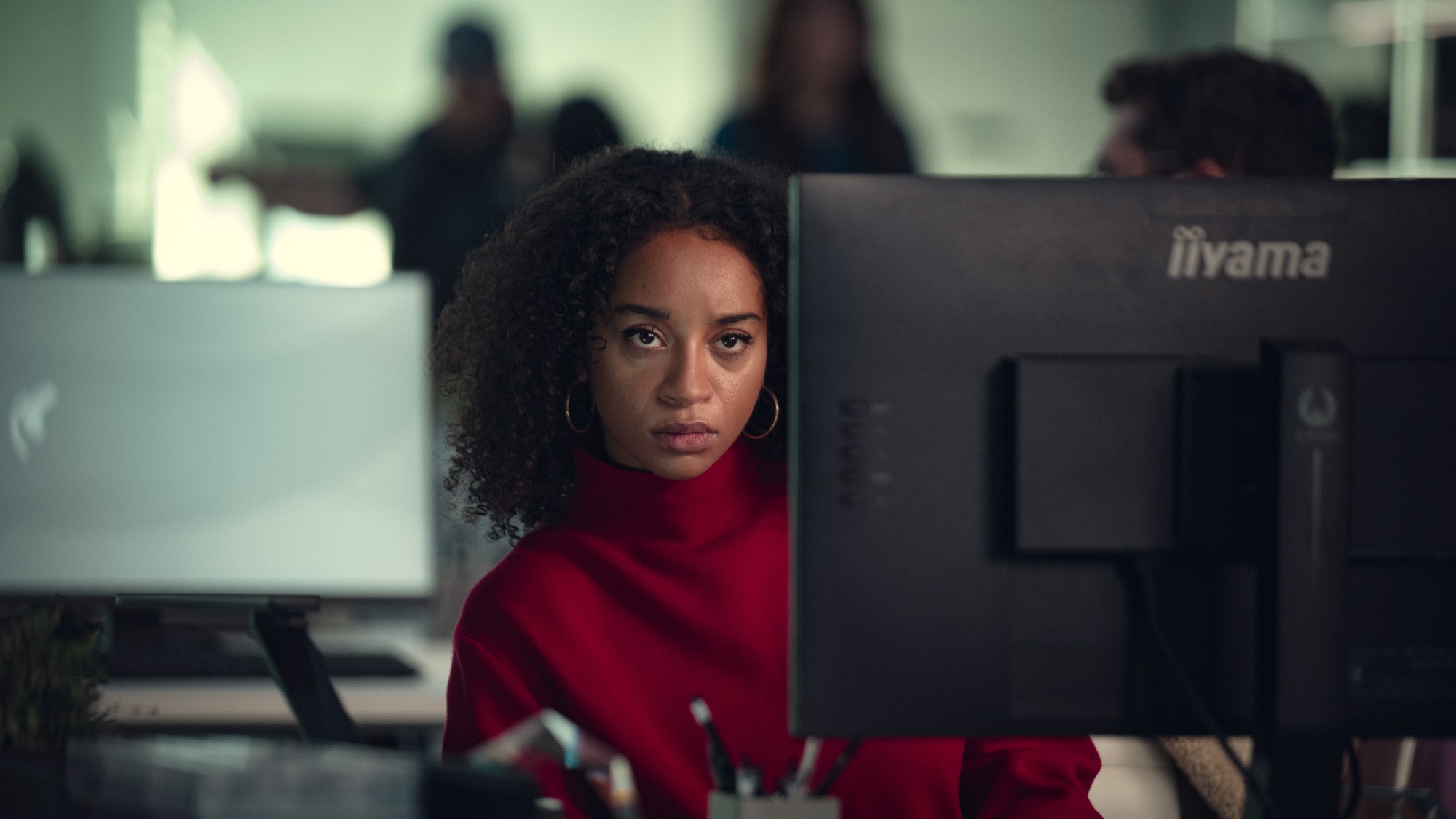 The 8 best sci-fi series of all time
The 8 best sci-fi series of all timethe week recommends Imagining — and fearing — the future continues to give us compelling and thoughtful television
-
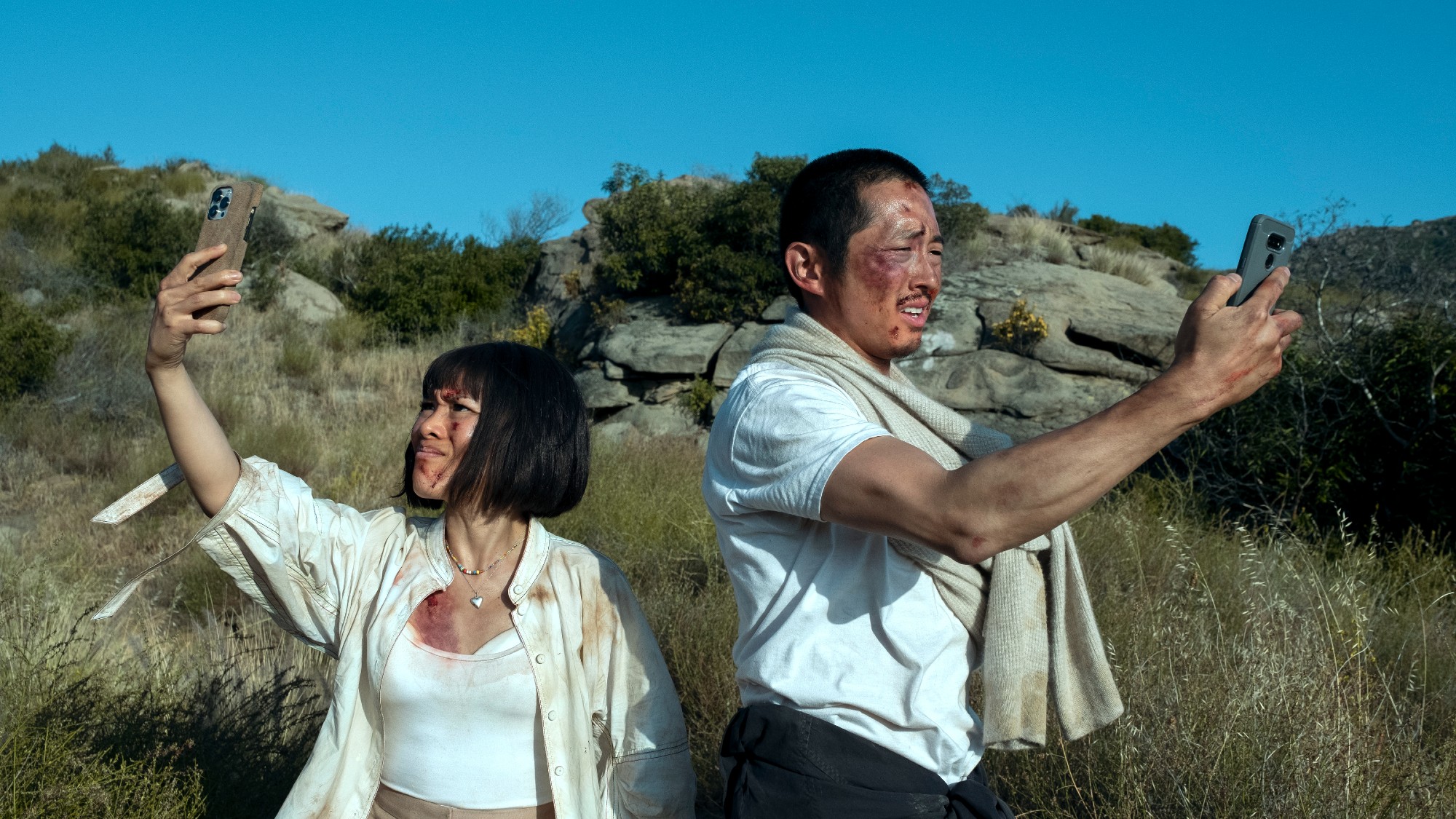 The 9 best dark comedy TV shows of all time
The 9 best dark comedy TV shows of all timeThe Week Recommends From workplace satire to family dysfunction, nothing is sacred for these renowned, boundary-pushing comedies
-
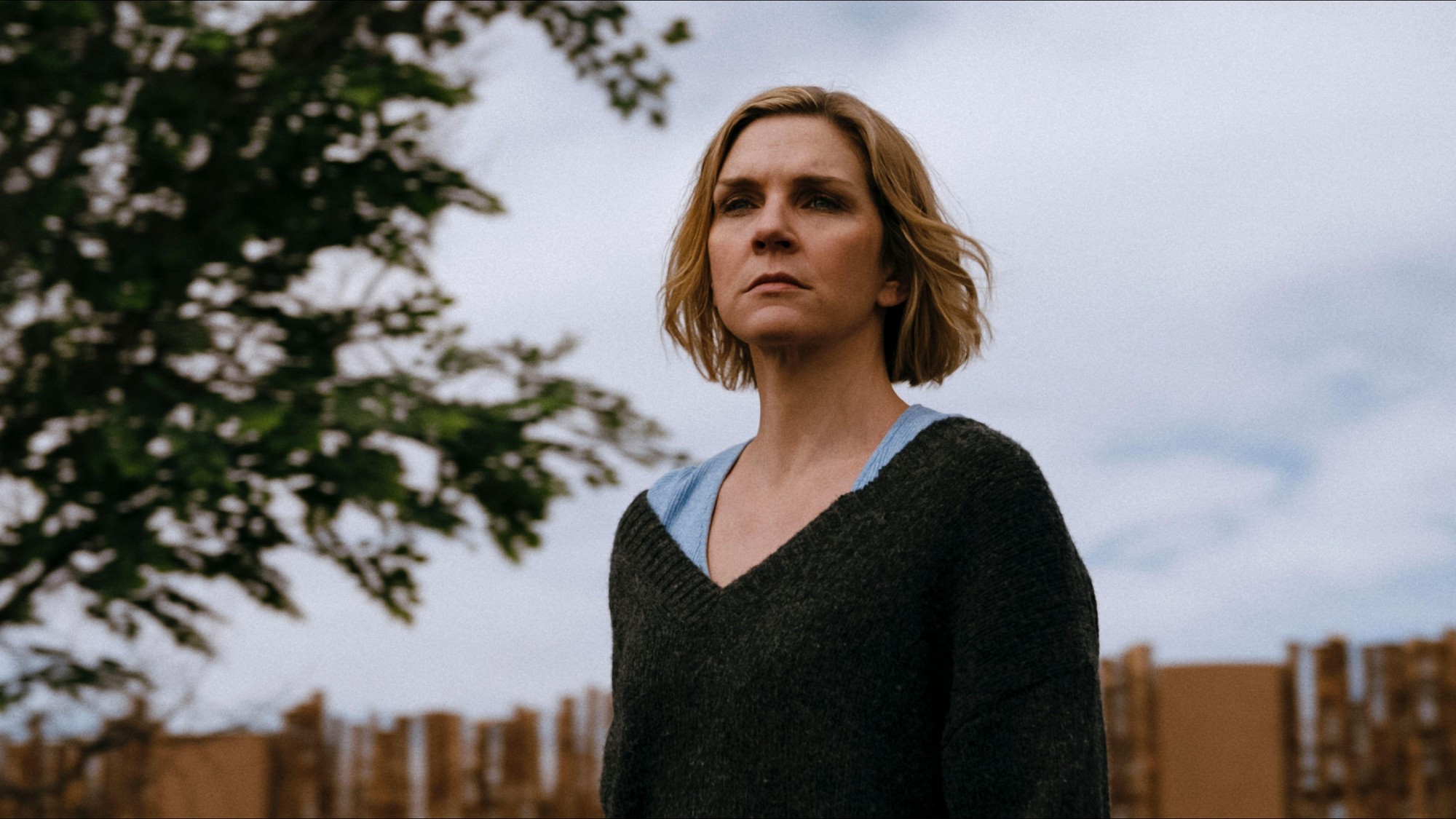 Gen Z in Los Angeles, the end of ‘Stranger Things’ and a new mystery from the creator of ‘Breaking Bad’ in November TV
Gen Z in Los Angeles, the end of ‘Stranger Things’ and a new mystery from the creator of ‘Breaking Bad’ in November TVthe week recommends This month's new television releases include ‘I Love L.A.,’ ‘Stranger Things’ and ‘Pluribus’
-
 The 5 best political thriller series of the 21st century
The 5 best political thriller series of the 21st centuryThe Week Recommends Viewers can binge on most anything, including espionage and the formation of parliamentary coalitions
